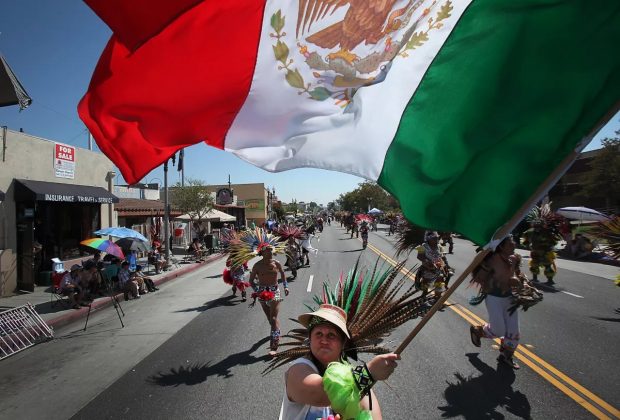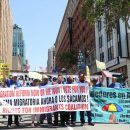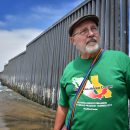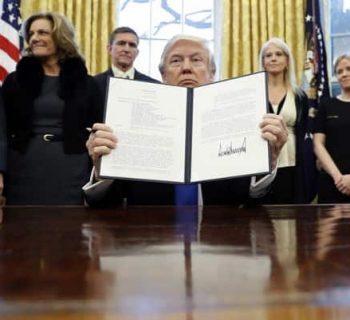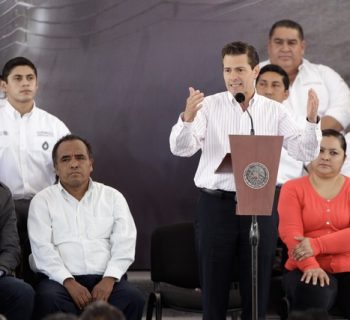By Yvonne Condes | KCET | MAY 3, 2022 | Photo courtesy of LA Pubic Library

In the spring of 1970, Dr. David Hayes-Bautista didn't know much about Cinco de Mayo other than the day commemorated the Mexican Battle of Puebla against the French. To him and his fellow UC Berkeley classmates he had gathered with to celebrate, Cinco de Mayo symbolized a David vs. Goliath myth about a small army overtaking its mighty invader. He assumed the holiday originated in Mexico, but it wasn't until decades later after combing through Spanish language newspapers that Hayes-Bautista, UCLA Center for the Study of Latino Health and Culture (CESLAC) director, discovered the true origins of one of the United States' biggest party holidays.
Cinco de Mayo has long been a cringe-worthy event of cultural appropriation. Sometimes called "Drinko de Mayo" where non-Mexican people can be found donning a sombrero and speaking with a Spanish accent while downing a margarita, the date is often confused with Mexican Independence Day. Many Latinos know that the holiday is about the 1862 Battle and that it's not celebrated in Mexico, but it's widely believed to have been created by Anglos in the late 20th century. In reality, celebrating Cinco de Mayo started right here in California by Mexican Americans 160 years ago.
"It had nothing to do with beer and nachos. It was very political."
David Hayes-Bautista, Director of the UCLA Center for the Study of Latino Health and Culture (CESLAC)
"It had nothing to do with beer and nachos," Hayes-Bautista said. "It was very political."
To explain how U.S. Cinco de Mayo celebrations began we must go back to the American Civil War.
"California was a free state but from the time it joined the Union there were proposals made in U.S. Congress — by southern politicians of course — to extend the reach of slavery, essentially draw the Mason-Dixon line all the way to the West, and then anything south of it could become a new slave state," said Cynthia L. Chamberlin, a CESLAC historian.
In 1862, the Confederacy was attempting to take over the western territories. This had California Latinos concerned knowing that the Confederacy wanted to expand into Spanish-speaking countries as well. Most Latinos in the state were in favor of the Union, Chamberlin said.
Around that same time, the French invaded Mexico to prevent the spread of democracy in North America and install a monarchy in place of the democratically elected President Benito Juárez.
"Latinos in California said these two wars are really the same war, in a sense," Chamberlin said. Which was about a democracy fighting against elite rule and white supremacy.
On May 5th, 1862, a small, volunteer army took on 6,000 French troops in Puebla. The Mexicans were outgunned and outnumbered, but after only one day of fighting the French retreated in an important symbolic victory for Mexico.

Back in California, Mexican Americans followed the news in Spanish language newspapers and were thrilled by Mexico's victory. It led them to form political organizations — Juntas Patrióticas Mejicanas — which met monthly and raised money to send to Mexico's President Juarez to aid his fight against the French. There would eventually be 129 Juntas, mostly in California.
When the groups got together, speakers used the Battle of Puebla as a rallying cry to fight for democracy, Hayes-Bautista said. The first Cinco de Mayo commemorations were held in Los Angeles and San Francisco in 1863 with parades, speakers and music.
"It was basically a civil rights commemoration, Latinos telling the world where they stood on the issues of the Civil War and the French intervention, that they supported freedom over slavery, they supported racial equality over white supremacy and they supported government of the people, by the people, for the people as opposed to elite plantation rule," he said.
"It was basically a civil rights commemoration, Latinos telling the world where they stood on the issues of the Civil War and the French intervention."
David Hayes-Bautista, Director of the UCLA Center for the Study of Latino Health and Culture (CESLAC)
While the Cinco de Mayo celebrations were a hit, the Juntas — all run by men — lost steam when the French regrouped and eventually took Puebla on May 17, 1863 and then Mexico City, Chamberlin said.
Francisca Manso de Cavazos, a Mexican immigrant living in Los Angeles, didn't lose hope.
"She called a meeting of about 100 women where she made a long and impassioned speech about how 'even if the men have given up, we women will not,'" Chamberlin said.
Once she started Junta Patriótica de Señoras Mejicanas de Los Ángeles, others followed with their own groups. Once the women started meeting, the men's groups started up again, Chamberlin said. Eventually, some of the organizations disbanded and others went on to become mutual aid societies.

But Cinco de Mayo celebrations kept going and have been held in California every year since 1863, Dr. Hayes-Bautista said.
The Juntas and the history of Cinco de Mayo would have been lost to history had it not been for Hayes-Bautista. In 1992, he created the Center for the Study of Latino Health and Culture at the David Geffen School of Medicine at UCLA. His research into the Latino Epidemiological Paradox — how Latinos have lower rates of chronic diseases than any other group including whites from heart disease to cancer — led him to research the formation of Latino populations in California.
As he began his research, he realized he knew when the Spanish came to California and their history, but not that of Mexicans.
"And nobody could tell me because it was always Spanish this and Spanish that," Hayes-Bautista said. "The demographer in me said something's not right."
So he reread the history books and found information about Spanish-speaking populations in California, but after the gold rush they basically disappeared and weren't mentioned again after 1860 until around 1920. It wasn't until he started looking through Spanish-language newspapers that he was able to fill the gaps left by historians at the time.
Unlike papers in English, Spanish-language papers printed Latino birth, death and marriage records, Hayes-Bautista said. "Whereas the English-language newspapers would pretty much ignore what was going on in the Spanish-language community, just kind of like today, not too different."

Hayes-Bautista put together a comprehensive collection of Spanish-language newspapers from California starting in 1851 to search for demographic information. To do that he had to read them cover to cover because the information was scattered throughout the pages.
He read about the Dred Scott decision in 1857, John Brown descending on the Harpers Ferry in 1859, Abraham Lincoln's presidential election in 1860 and the American Civil War's first Battle of Bull Run in 1861.
"I realized I was reading the Civil War in Spanish the way Latinos read it here, that would have lived here in L.A., this is what they would have read and what they would have known," Hayes-Bautista said.
The papers also covered the French intervention in Mexico, the Juntas and the first Cinco de Mayo celebration. He knew he had to share the story and wrote the book "El Cinco de Mayo: An American Tradition" in time for the 150th anniversary of the Battle of Puebla, which was 10 years ago.
And UCLA's CESLAC will bring back its annual teatro reenactment of the first Cinco de Mayo commemoration — canceled the last two years due to COVID — with the original speeches and dances in partnership with La Plaza de Cultura y Artes and Ballet Folklórico Flor de Mayo.

